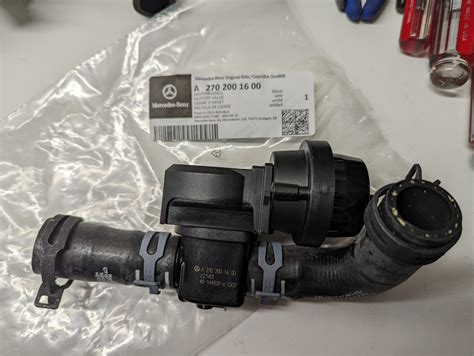Auto Coolant Leak

Auto coolant leaks are a common issue faced by vehicle owners, often resulting in costly repairs and potential engine damage. Understanding the causes, symptoms, and preventive measures can help mitigate the impact of coolant leaks and ensure the longevity of your vehicle's engine. This comprehensive guide delves into the world of auto coolant leaks, providing valuable insights and expert advice to help you tackle this prevalent automotive problem.
Understanding Auto Coolant Leaks

The automotive cooling system is a vital component designed to regulate the engine’s temperature, preventing overheating and ensuring optimal performance. Coolant, also known as antifreeze, plays a crucial role in this system by absorbing and transferring heat away from the engine. When a leak occurs, it can lead to a loss of coolant, compromising the cooling system’s efficiency and potentially causing severe engine damage.
Causes of Coolant Leaks
Coolant leaks can arise from various sources within the vehicle’s cooling system. Common causes include:
- Hose or Gasket Failure: Over time, hoses and gaskets can deteriorate, leading to cracks or tears that allow coolant to escape. This is particularly common in older vehicles or those with high mileage.
- Radiator Issues: The radiator, responsible for dissipating heat from the coolant, can develop leaks due to corrosion or damage. This can occur at the seams, joints, or even in the radiator core itself.
- Water Pump Problems: The water pump, which circulates coolant through the engine, can develop leaks at the shaft seal or the housing itself. This is often a result of wear and tear or improper installation.
- Thermostat Malfunction: The thermostat regulates the flow of coolant, and if it fails, it can cause coolant to leak or bypass the radiator, leading to overheating.
- Engine Block or Cylinder Head Cracks: In severe cases, cracks can develop in the engine block or cylinder head, resulting in significant coolant leaks. This is often a consequence of extreme temperature fluctuations or engine overheating.
| Component | Common Leak Causes |
|---|---|
| Hoses | Cracks, tears due to age or wear |
| Gaskets | Deterioration, corrosion |
| Radiator | Corrosion, damage to seams or core |
| Water Pump | Shaft seal failure, housing cracks |
| Thermostat | Malfunction, improper sealing |
| Engine Block/Cylinder Head | Cracks due to extreme temperatures |

Symptoms of a Coolant Leak
Recognizing the signs of a coolant leak is crucial for early detection and timely repair. Some common symptoms include:
- Visible Leaks: You may notice coolant dripping or pooling beneath your vehicle, particularly after parking. Coolant often leaves a trail or stain, which can be easily identified.
- Low Coolant Levels: Regularly checking your coolant reservoir and noticing consistently low levels can indicate a leak. Ensure you maintain the proper coolant-to-water ratio as specified by the manufacturer.
- Overheating Engine: A coolant leak can lead to reduced cooling efficiency, causing the engine to overheat. This is often accompanied by a temperature gauge reading in the red zone or the activation of the engine’s temperature warning light.
- Sweet Odor: Coolant has a distinct sweet smell, and if you notice this odor inside or outside your vehicle, it could be a sign of a leak. The scent may become more noticeable when the engine is running or after it has been turned off.
- Steam or Smoke: In severe cases, a coolant leak can cause steam or smoke to emit from under the hood. This is a critical sign and requires immediate attention to prevent engine damage.
Diagnosing and Repairing Coolant Leaks

Accurate diagnosis is crucial for effective repair of coolant leaks. Here’s a step-by-step guide to help you identify and address the issue:
Step 1: Visual Inspection
Start by visually inspecting your vehicle for any visible signs of leaks. Check the ground beneath your vehicle for any traces of coolant, and examine the hoses, radiator, and water pump for any visible damage or leaks.
Step 2: Pressure Testing
Pressure testing is an effective method to identify leaks in the cooling system. This process involves pressurizing the system and observing for any changes in pressure that could indicate a leak. It’s a specialized task best performed by a qualified mechanic.
Step 3: Dye Testing
Dye testing involves adding a UV-reactive dye to the coolant. The vehicle is then operated, and a black light is used to inspect for any traces of dye that may have leaked. This method can help identify even small leaks that may be difficult to detect otherwise.
Repairing Coolant Leaks
The repair process will depend on the source of the leak. Common repairs include:
- Hose Replacement: If a hose is cracked or torn, it should be replaced with a new hose of the same specifications. Ensure the new hose is properly routed and clamped.
- Gasket Replacement: Depending on the type of gasket, replacement may involve replacing the entire component or using specialized sealants to repair the leak.
- Radiator Repair: In some cases, a radiator can be repaired by soldering or brazing the affected area. However, for more severe leaks, radiator replacement may be necessary.
- Water Pump Repair: Water pump leaks often require replacement of the entire unit. Ensure the new pump is properly installed and aligned.
- Thermostat Replacement: A faulty thermostat should be replaced with one of the same specifications. This is a relatively simple process but can have a significant impact on the cooling system’s performance.
Preventive Measures and Maintenance
While coolant leaks can occur unexpectedly, certain preventive measures can reduce the likelihood and severity of the issue. Regular maintenance and vigilance can help keep your cooling system in optimal condition.
Regular Inspection
Conduct regular visual inspections of your cooling system components, including hoses, radiator, and water pump. Look for any signs of deterioration, cracks, or leaks. Early detection can prevent small issues from becoming major problems.
Coolant Flush and Replacement
Regularly flushing and replacing coolant is crucial for maintaining the efficiency of your cooling system. Over time, coolant can become contaminated or degrade, reducing its effectiveness. Most manufacturers recommend a coolant flush every 30,000 to 50,000 miles, depending on the type of coolant used.
Proper Coolant Maintenance
Ensure you use the correct type and ratio of coolant specified by the vehicle manufacturer. Mixing different types of coolant or using an incorrect ratio can lead to compatibility issues and potential leaks.
Address Overheating Issues Promptly
If your vehicle experiences overheating, address the issue immediately. Overheating can lead to thermal stress, causing cracks and leaks in the cooling system components. Prompt action can prevent further damage.
Conclusion: Ensuring Your Engine’s Health
Auto coolant leaks are a common challenge faced by vehicle owners, but with the right knowledge and preventive measures, you can mitigate the impact and ensure the longevity of your engine. Regular maintenance, prompt action, and accurate diagnosis are key to tackling coolant leaks effectively. By understanding the causes, symptoms, and repair processes, you can keep your vehicle’s cooling system in optimal condition, preventing costly repairs and potential engine damage.
What are the potential consequences of ignoring a coolant leak?
+
Ignoring a coolant leak can lead to severe engine damage. As the coolant level drops, the engine may overheat, causing warping or cracking of critical components. This can result in expensive repairs or even the need for a complete engine replacement.
Can I drive with a coolant leak?
+
It is not recommended to drive with a coolant leak. Operating a vehicle with a compromised cooling system can lead to overheating, which can cause immediate and irreversible damage to the engine. If you suspect a coolant leak, have your vehicle inspected and repaired as soon as possible.
How often should I check my coolant levels?
+
It is recommended to check your coolant levels at least once a month. Regular inspections can help you detect any leaks or changes in coolant levels early on, allowing for timely repairs and maintenance.



